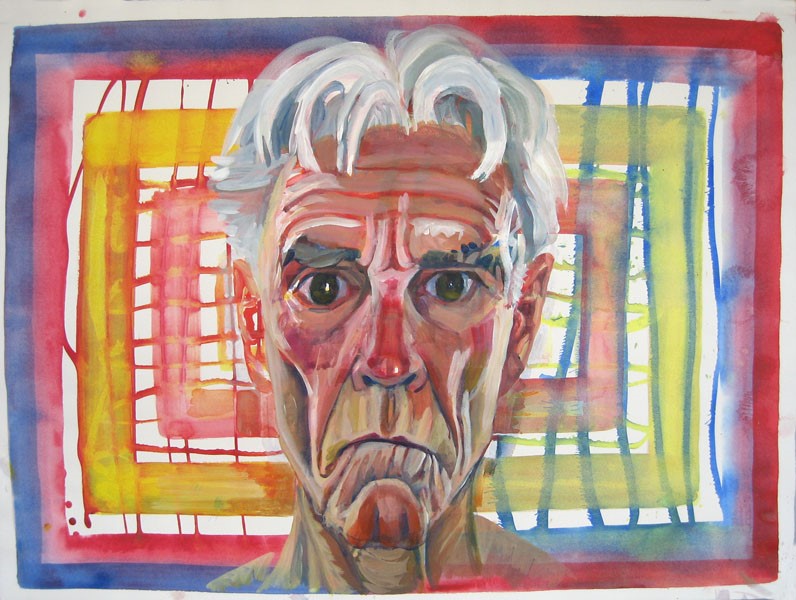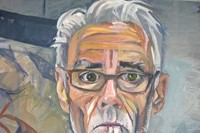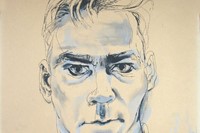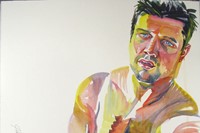Painter Don Bachardy is known for his frank and, some might say, occasionally unflattering portraits of the rich, famous, and infamous, a virtual who’s who list of actors, writers, artists, composers, directors, and Hollywood elite that he has
Painter Don Bachardy is known for his frank and, some might say, occasionally unflattering portraits of the rich, famous, and infamous; a virtual who’s who list of actors, writers, artists, composers, directors, and Hollywood elite that he has encountered and observed over the last fifty years. These candidly revealing studies hang in the permanent collections of the Metropolitan Museum of Art in New York, the de Young Museum of Art in San Francisco, the Fogg Art Museum of Harvard University, the Smithsonian Institute, and the National Portrait Gallery in London, among others. Bachardy is perhaps more well-known as the longtime companion of writer Christopher Isherwood whom he first met in 1953, when he was 18 and Isherwood was 48 (the duo remained together until Isherwood's death in 1986) and as the inspiration for A Single Man, Isherwood’s 1964 book, which was recently adapted for the screen by designer Tom Ford. AnOther recently spoke to the artist about his "eye", his life and work and his relationships with his subjects.
Can you talk about your recent exhibitions?
I had one early last year at Craig Krull Gallery in Los Angeles, self portraits from the 1960s up until now, and just did one at the g169 Gallery in Santa Monica. I was uneasy about showing them and wondered why I was doing it but I sold a lot, at least 10 early pin drawings from the 1970s and about 27 of my non-objective colour wash paintings. I’ve never shown so many at time. The critics called the show “surprising".
You’ve drawn and painted many famous people.
I’ve been very lucky. I’ve done sittings with an amazing number of famous people. I find it remarkable myself to remember all the amazing people I’ve somehow managed to get to sit for me. And they’ve been so kind. In the '50s and '60s celebrities were much more accessible, at least they were to me. I had Isherwood to back me up, he was my accreditation.
Who are some of the most intriguing?
It’s such a long list. Jack Nicholson, Vivian Leigh, Laurence Olivier, John Gielgud, Bette Davis, Ginger Rogers. Tom Ford — I like him a lot. Charming guy and very talented. The director Vincente Minnelli invited me to his house to draw him and he showed me a portrait of him that had previously been done. It was a saccharin sweet, smiling picture, like something you’d find in a candy box. It gave me pause. I knew that my version would be much more truthful. We did two sittings. I think it's my very best celebrity portrait.
How do you choose your subjects these days?
It’s less a matter of choosing nowadays as it is the people who come to me naturally. I’m not so interested anymore in painting famous people as I’ve done that; that was my boot camp. It’s obligatory for a young portrait artist to work with a recognisable subject. Otherwise how is he going to become known? It isn’t necessary for me to go on doing famous people. I don’t turn them down, I just don’t chase after them.
You only paint live. Why is that?
I cannot do it any other way. I never work from photographs. I have to have someone sitting there in front of me. It’s my peculiar talent. It’s the thing that sparks me. I don’t know how to paint if there’s no one there in front of me. I’ve been dependent on sitters for over 50 years. Lately, I’ve started to do non-objective color paintings, which is a totally different way to work. I can do those at anytime.
What are you looking for and what do you see when you do a portrait?
I’m looking for my own interests so it’s not an advanced Idea. I have no notion of what I’m gong to paint before my subject sits down in my chair. I don’t have an idea until I see the person. That is the delight and I’m never not inspired. I’m willing to work with anyone who will sit still and be peered at. Once I focus on the face I know what to do. There’s an excitement about it, a challenge. I’m looking for an exchange of energy. After 50 years, I’ve never found another way of doing it. It’s the hardest thing to attempt and it’s always a task.
What do your self-portraits tell the viewer about you?
They are tough to do and I only do them when a sitter cancels at the last minute if I’m keyed up to working. That’s usually when I get a great range of realities. I may think they look exactly like me. Sometimes people agree. Other times they say I'm too harsh on myself.
What makes a good subject?
Really just someone who is very still, very concentrated, who will look at me with eyes wide. To have that kind of access is energising for me. A sitting is a collaboration. The more open and still my sitter, the better my work is likely to turn out. I always ask each sitter to sign and date the paintings. I couldn’t have done it without them, so, of course, their signature should be on it. “I look so sad,” is the most usual reaction I get from of my sitters. I say: “When someone looks at your portrait, wouldn’t you rather have them say “You look much better than that?” rather than “What’s happened to you since that was painted?”
Text by Ricky Lee



